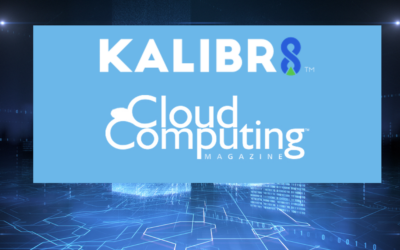By the end of last year, the overall cloud computing market value came in at about USD 545.8 billion, with experts predicting the market to grow at a CAGR of 17.9 percent, with estimates putting the market value at USD 1,240.9 billion by the end of 2027.
This is not surprising at all, as the technology provides a vast array of advantages for organizations, ranging from security enhancements to improved scalability and flexibility, elimination of up-front capex, and a promised reduction in opex and overall expense.
While cloud adoption is experiencing unprecedented growth, there are growing challenges for organizations to handle. Apart from the technological know-how and IT skills to use the cloud properly, many companies are finding that the cloud may be more expensive than they originally thought.
Cloud cost continues to be listed as the number one concern of buyers today, as it has been for nearly a decade.
Cloud waste averaged 30 percent of companies’ cloud budgets in 2021, with that figure jumping to 32 percent by the end of 2022. In other words, despite very clear concerns – the cost of cloud caused by lack of guardrails is getting worse.
Cloud Bill Shock Is Avoidable
Cloud Bill Shock happens when businesses invest money in cloud services but don’t accurately forecast ongoing costs and usage or adapt immediately to curtail mounting costs. Most services are billed monthly, so by the time the problem comes to light; it is too late to recover.
There are two main scenarios that lead to cloud bill shock.
Either services were scaled up without a full understanding of cost implications, or services were turned on and left running when they weren’t required.
For example, scaling up services without a full understanding of the cost implication can be deadly. For instance, if outgoing data cost nine cents per gigabyte, downloading a 16GB file would cost USD 1.44. However, sharing the download link with an entire company, where it can then be downloaded more than 1800 times, would end up costing USD 2600, a hefty hit for any company not realizing how quickly the price tag can accumulate.
As for the second scenario, the most common case is when someone forgets to switch off a virtual private server (VPS) or virtual machine (VM). If this is not automated, either the Managed Service Provider or the end customer must terminate instances manually if they do not want to be charged.
Kalibr8 to the Rescue
Our cloud optimization platform helps MSPs, and by extension their end-customers, to automatically manage their cloud consumption in real-time, scaling up and down depending on the season, time of day, location, and trends – with no human intervention required once the solution is put in place and policies are set.
Kalibr8 makes it easy to conquer cloud sprawl by enhancing visibility across all environments, as well as identifying the optimal balance for workloads and making the most of cloud capacity. With the application monitoring and management tools provided by a cloud optimization platform, MSPs can set up ideal policies on how and when to decommission cloud resources that are no longer needed, use automated provisioning to shut down old workloads, and otherwise monitor, manage, and maintain exactly the right balance with great precision.
At Kalibr8, we understand how critical cloud management and optimization capabilities have become to the modern-day enterprise, as cloud offerings have nearly become the backbone of virtually every industry.
Designed for distributors and MSPs with a two-tier supply chain approach, today, our platform securely manages Microsoft Azure assets with the goal of improving the economics and ROI. This year we are adding AWS and Google Public Cloud, expanding the options organizations have when leveraging our cloud optimization platform, including a unified solution across multiple clouds.
Our platform can help businesses build, view, and understand over time VM costs vs. specifications and requirements against each VM’s intended use with the Kalibr8 platform. The platform allows enterprises to control their cloud costs through automated capabilities that help them identify unmanaged resources, accurately allocate costs, and even implement effective governance.
Furthermore, our platform can aid enterprises in understanding a VM’s usage pattern and making more accurate decisions as to when each scaling or schedule group is needed to be available to users. As well as easily see savings from scheduling & scaling VMs and cost usage in dollars and cents over a defined billing period.
From Bill Shock to Cloud Confidence
Overall, by working with Kalibr8 and leveraging our Kalibr8 cloud optimization platform, organizations of all sizes and verticals can work with their customers to maximize budgets and confidence in their cloud opex and can view costs and savings by resources, group, subscription, or tenant, benefiting them in both the short, and long-term. Contact us for a quick demo and learn why more and more service providers are trusting in our modern, AI-powered approach to optimize and harmonize their cloud offerings.


